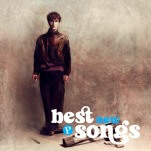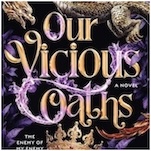Buffalo Trace Traveller Blended Whiskey Review
Photos via Buffalo Trace, Sazerac Co.
At a time when package store shelves are clogged with celebrity owned and celebrity endorsed booze of every variant, you can’t fault the likes of country music star Chris Stapleton for specifically targeting the hypest of the hype for his own debut in the world of branded whiskey. Regardless of the confusing optics of Stapleton partnering on a alcohol brand at all, months after a GQ profile seemed to prominently imply that the singer had embraced sobriety–comments that have subsequently been walked back by Stapleton and co.–it makes rock-solid financial sense for the singer to hitch his wagon to the likes of Sazerac’s Buffalo Trace. After all, simply having a whiskey brand all your own? That’s no longer remarkable, not when there are distilleries out there specializing specifically in providing “unique” whiskey brands to a dozen disparate bands at the same time. But a Buffalo Trace collaboration? That will catch the attention of even the bourbon-hoarding cognoscenti. And as such, the announcement of Buffalo Trace Traveller Blended Whiskey caught a lot more attention than any normal celebrity partnership would have in this day and age.
But just as quickly, the confusion and questions about this product began to mount. “Blended whiskey”? A blend of what and what? Traveller is sold as a collaboration between Stapleton and Buffalo Trace Master Distiller Harlen Wheatley, but what is the actual Buffalo Trace component of what ends up in this bottle? Such details are hard to come by, the blend simply being labeled as “Blend No. 40” of a reported 50 that were created and sampled.
At the very least, the company has reported that Traveller does not contain any grain neutral spirits, which legally can be used in blended whiskey brands. But if they’re not using grain neutral spirits, why use the term at all, considering that “blended whiskey” doesn’t exactly often imply quality on the American whiskey shelf? Surely if the brand could qualify as straight bourbon or American straight whiskey, those terms would be used. A possible answer is one I’ve seen implied by various spirits writers across the web: The blend may contain Canadian spirit, which would make a certain ideological sense for a brand trying to market itself as approachable, “lighter” and inviting. But this is ultimately all conjecture: We have no age statement, mash bills or origin point for any of this spirit, just a 45% ABV (90 proof), which matches the company’s own flagship Buffalo Trace Bourbon, and a similar $36 MSRP. Note that this invites an obvious comparison to that flagship bourbon brand.
Regardless of all the cloak-and-dagger secrecy, let’s get to tasting this new expression.
-

-

-

-

-

-

-

-

-

-

-

-

-

-

-

-

-

-

-

-

-

-

-

-

-

-

-

-

-

-

-

-

-

-

-

-

-

-

-

-








































